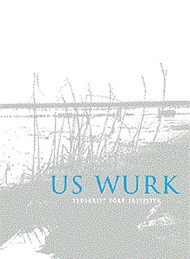Das regelmäßige schwache Verb im Mooringer Friesisch: Zwei Konjugationsklassen oder phonologisch bedingte Allomorphie?
DOI:
https://doi.org/10.21827/5fb7c8ffe4618Abstract
In this article we investigate the historical development of the regular weak verb in Mooring, the most vital Mainland North Frisian dialect. We show that until the first half of the 20th century Mooring still distinguished between the two weak conjugation classes inherited from Old Frisian and typical for most Frisian dialects: Class I without and class II with a theme vowel -e- in the endings of the 2nd and 3rd Person Singular Present, the Past and the Past Participle. From the end of the 19th century onward, a process of deletion of schwa after sonorants gradually caused the fusion of class II weak verbs with a stem-final vowel or sonorant with class I weak verbs. After World War II this process came to its (near) completion and the former morphological division of the weak verbs in two conjugation classes was given up in favour of a phonological distribution of the endings on the basis of the stem-final segment: Endings with e appear after obstruents, endings without e after vowels and sonorants. Although modern grammars in principle recognized this new phonological conditioning of the weak conjugation, they failed to see that there remained a number of exceptions,
viz. former class I weak verbs with a stem-final obstruent still taking an eless ending. That one is dealing with exceptions here is clearly shown, however, by the fact that these verbs gradually adapt to the phonological conditioning and assume endings with e in modern Mooring.

